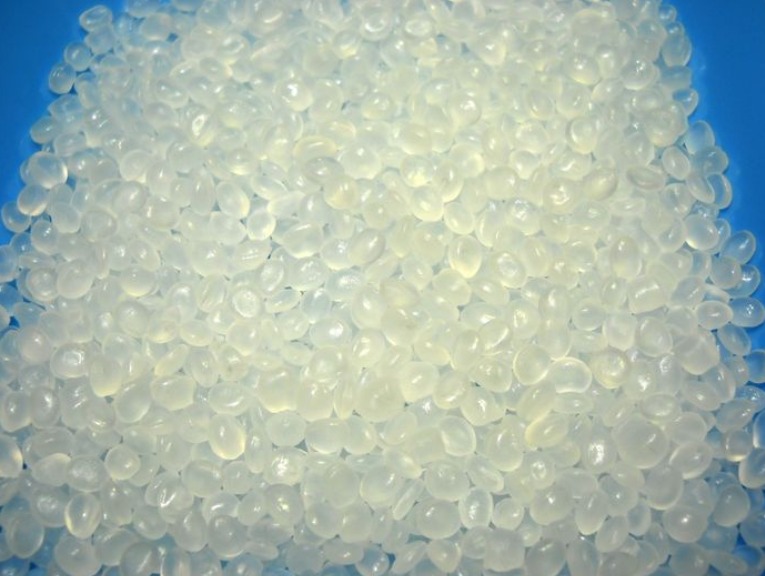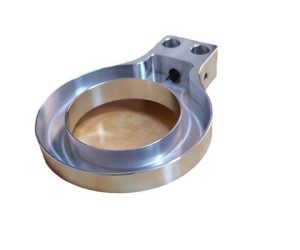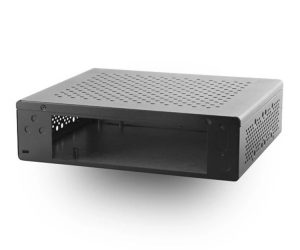The seemingly mundane plastic pellet, a granular precursor to countless manufactured objects, belies a complexity that extends far beyond its diminutive form. This discourse will dissect the intricacies of injection molding, focusing specifically on the selection and acquisition of these crucial polymeric building blocks. We will navigate the treacherous currents of supply chains and the subtle nuances of material science, ultimately guiding the discerning reader towards informed procurement strategies.
Firstly, let us embark upon a taxonomy of plastic pellets. These are not mere homogenous spheres; rather, they represent a diverse array of thermoplastic and thermoset polymers, each with unique rheological properties and processing demands. Polyethylene, in its myriad forms (HDPE, LDPE, LLDPE), presents a spectrum of molecular weights and branching patterns, directly influencing the final product's tensile strength, flexibility, and impact resistance. Similarly, polypropylene's isotactic, syndiotactic, and atactic configurations dictate its crystalline structure and, consequently, its suitability for specific applications. Polyvinyl chloride, with its inherent rigidity and susceptibility to degradation, demands careful consideration of processing parameters. Beyond these common polymers, the landscape expands to encompass the specialized realms of polyamides, polycarbonates, polyesters, and countless engineered blends, each demanding a nuanced understanding of their compositional intricacies.
The acquisition of these polymeric precursors is not a trivial undertaking. It necessitates a rigorous evaluation of potential suppliers, extending beyond superficial assessments of pricing and delivery schedules. A comprehensive due diligence process must encompass a thorough investigation of the supplier's manufacturing processes, quality control protocols, and raw material sourcing. The traceability of the polymer chain, from monomer synthesis to pellet production, is paramount, ensuring consistent material properties and minimizing the risk of contamination or adulteration. Furthermore, the selection of the appropriate pellet grade for a given injection molding process requires a deep understanding of the interplay between melt flow index, molecular weight distribution, and the desired mechanical properties of the final product. Failure to account for these critical factors can lead to catastrophic processing failures and compromised product quality.
Finally, while the identification of reputable suppliers is crucial, it is equally important to understand the broader competitive landscape. The industry is characterized by a complex interplay of global players, regional specialists, and niche providers, each with its own strengths and limitations. A strategic approach to supplier selection involves not only evaluating individual companies but also understanding the broader dynamics of the market, anticipating potential disruptions, and building robust, diversified supply chains capable of weathering unforeseen circumstances. The success of any injection molding operation hinges not only on the quality of the pellets themselves but also on the strategic foresight and meticulous planning that underpins their procurement.
The Labyrinthine World of Injection Molding: Navigating the Pellet Paradigm
The seemingly mundane plastic pellet underpins a complex and often unpredictable manufacturing landscape. This isn't merely a matter of selecting the "right" resin; it's a journey through a multifaceted ecosystem of material science, supply chain dynamics, and quality control intricacies, all impacting the ultimate success or failure of injection molding operations. This exploration delves into the chaotic beauty of this process, revealing the hidden variables that can make or break a project.
Deciphering the Granular Enigma: Material Selection & its Unforeseen Consequences
2.1 Beyond the Obvious: A Taxonomy of Plastic Granules: The common classifications – Polypropylene (PP), Polyethylene (PE), Acrylonitrile Butadiene Styrene (ABS), Polystyrene (PS), and Polyethylene Terephthalate (PET) – represent only the tip of a vast iceberg. Consider the subtle variations within each type: the molecular weight distribution, the presence of additives (nucleating agents, stabilizers, fillers), and the inherent batch-to-batch variability. These seemingly minor differences can dramatically alter the final product's properties, leading to unexpected outcomes if not meticulously controlled. Furthermore, the emergence of bioplastics and engineered polymers adds further layers of complexity, demanding a deep understanding of their unique processing requirements and potential limitations.
2.2 The Material's Whisper: Unveiling Hidden Properties: Melt Flow Index (MFI) and tensile strength are merely starting points. Consider the less-discussed but equally crucial factors: viscoelastic behavior at elevated temperatures, thermal degradation kinetics, and the susceptibility to hydrolysis or UV degradation. The interaction between these properties, often unpredictable, dictates the optimal processing parameters and the long-term performance of the molded component. Ignoring these subtleties can result in warping, cracking, or premature failure, leading to costly rework or product recalls.
The Perilous Path to Procurement: Sourcing and the Shadow of Supply Chain Volatility
3.1 Navigating the Supplier Labyrinth: Finding a reliable supplier is akin to navigating a treacherous maze. Industry reputation is crucial, but it's not a guarantee of consistent quality. Rigorous due diligence, including on-site audits of manufacturing facilities and quality control procedures, is paramount. The supplier's ability to handle fluctuations in demand and supply chain disruptions – a growing concern in today's volatile global market – must be carefully evaluated.
3.2 The Quality Control Crucible: Beyond Certifications: While ISO certifications offer a baseline assurance, they don't fully capture the nuances of consistent quality. A proactive approach requires demanding detailed material test reports, including rheological data and spectroscopic analyses, for each delivery. This proactive approach mitigates the risk of unexpected material variations that can derail an entire production run.
3.3 The Economics of Scale: Bulk Purchasing and its Unseen Pitfalls: Bulk purchasing offers cost advantages, but it also introduces significant risks. Inadequate storage facilities can lead to material degradation, rendering a substantial investment worthless. Furthermore, the lead times associated with bulk orders must be carefully factored into production schedules, leaving little room for error or unforeseen delays. The seemingly simple act of procuring pellets becomes a complex logistical and financial undertaking.
Conclusion: Embracing the Chaos, Mastering the Process
The injection molding process, seemingly straightforward, is a complex interplay of material science, supply chain management, and manufacturing expertise. Success hinges on a deep understanding of the inherent unpredictability of the system and the ability to proactively mitigate the risks associated with each stage. Only through meticulous planning, rigorous quality control, and a proactive approach to supplier management can manufacturers navigate the labyrinthine world of plastic pellets and achieve consistent, high-quality results.
Which Plastic Granules Are Used for Injection Molding?
The types of plastic granules used for injection molding include polypropylene (PP), polyethylene (PE), acrylonitrile butadiene styrene (ABS), polystyrene (PS), and polyethylene terephthalate (PET). Each material offers specific characteristics and applications, allowing manufacturers to choose the most suitable plastic granules based on their desired end-product requirements.
Injection molding is a manufacturing process that produces plastic parts by melting and injecting polymer granules into a mold. The granules can be made of different types of thermoplastic polymers, such as polyethylene, polypropylene, polystyrene, acrylonitrile butadiene styrene, polyethylene terephthalate, and polycarbonate. The choice of granules depends on the desired properties and applications of the final product. Some of the factors that influence the selection of granules are:
- Cost: Commodity grade resins are cheaper than engineering grade resins, but they have lower mechanical, chemical, and thermal properties. They are suitable for disposable items or low-stress applications, such as plastic bottles, bags, and wraps.
- Color: Some granules are transparent, while others are opaque or mixed with pigments. The color of the granules affects the appearance and functionality of the product. For example, transparent granules are used for optical or medical devices, while colored granules are used for aesthetic or identification purposes.
- Density: The density of the granules affects the weight and strength of the product. Higher density granules produce heavier and stronger products, while lower density granules produce lighter and weaker products. The density also affects the melting and cooling behavior of the granules during injection molding.
- Resistance: The resistance of the granules refers to their ability to withstand external forces or conditions, such as impact, abrasion, heat, cold, moisture, chemicals, or UV radiation. Higher resistance granules produce more durable and reliable products, while lower resistance granules produce more fragile and sensitive products. Resistance is especially important for engineering or industrial applications, such as automotive or military components.
To summarize, different types of plastic granules are used for injection molding depending on the cost, color, density, and resistance requirements of the product. The granules are melted and injected into a mold that has the shape and size of the desired product. The mold is then cooled and opened to release the product.
How Do You Get Plastic Pellets?
Plastic pellets are obtained through a process called polymerization, where small resin particles are formed and cooled. These particles are then cut or ground into uniform pellets, ready to be used in the injection molding process. Plastic pellets are typically purchased from specialized suppliers who manufacture them according to industry standards and specific material requirements.
Plastic pellets are small, granular or pelletized forms of plastic resins, and they are a crucial raw material used in various plastic manufacturing processes, including injection molding, extrusion, and blow molding. The process of obtaining plastic pellets involves several steps:
- Polymerization: The first step in the production of plastic pellets is the polymerization of the raw materials. Polymerization is a chemical reaction in which small molecules called monomers are linked together to form long chains known as polymers. Different types of plastic resins are produced based on the specific monomers used and the polymerization process.
- Extrusion or Pelletizing: Once the plastic resin is polymerized, it is typically in the form of large solid chunks or sheets. These chunks or sheets are then processed through an extrusion machine, which melts the resin and forms it into long strands. The strands are cooled and solidified and then chopped into small pieces or pellets using a pelletizing machine.
- Drying: After pelletizing, the plastic pellets may go through a drying process to remove any moisture that may have been absorbed during the manufacturing process. Drying is essential as moisture can negatively impact the quality of the pellets and the plastic manufacturing process.
- Quality Control: The plastic pellets undergo quality control checks to ensure they meet the required specifications. Quality control involves checking the size, shape, and properties of the pellets to ensure they are consistent and suitable for the intended applications.
- Packaging: Once the plastic pellets pass quality control, they are packaged into bags, boxes, or containers for shipment to manufacturers and processors. The packaging helps protect the pellets from contamination and ensures they remain in good condition during transportation and storage.
Plastic pellets are available in various sizes and colors, depending on the type of plastic resin and the specific application requirements. Manufacturers and processors purchase plastic pellets from suppliers and use them as the starting material for various plastic products used in industries such as automotive, packaging, electronics, construction, and consumer goods.
The Algorithmic Optimization of Injection Molding Through Bulk Polymer Acquisition and Management
The contemporary landscape of injection molding is inextricably linked to the strategic acquisition and meticulous management of bulk plastic pellets. This isn't merely a matter of cost reduction; it represents a complex interplay of logistical efficiency, material science, and process optimization, impacting not only profitability but also the very quality and consistency of the final product. This analysis delves into the multifaceted nature of this critical supply chain element, examining the intricate relationships between bulk polymer sourcing, storage protocols, and the resultant impact on the overall manufacturing paradigm.
The escalating demand for high-throughput injection molding necessitates a paradigm shift away from fragmented, just-in-time material acquisition. The inherent economies of scale offered by bulk purchasing are undeniable. However, the true value proposition extends far beyond simple cost savings. A consistent, uninterrupted flow of high-quality polymer feedstock minimizes production downtime, a critical factor in maximizing return on investment (ROI) and overall operational efficiency. This requires a sophisticated understanding of polymer rheology and its impact on the injection molding process parameters, ensuring optimal melt flow and minimizing defects.
Sourcing bulk plastic pellets transcends the simple act of procurement. It demands a rigorous evaluation of potential suppliers, encompassing not only price competitiveness but also a comprehensive assessment of their quality control protocols, material traceability, and adherence to industry-specific certifications (e.g., ISO 9001). The selection of a strategic partner necessitates a deep understanding of the specific polymer grades required, their inherent material properties, and their compatibility with the target application. Furthermore, access to the supplier's technical expertise is paramount, enabling collaborative problem-solving and the optimization of the injection molding process through tailored material recommendations and process adjustments.
The post-acquisition phase presents its own set of challenges. Effective storage and handling are critical to preserving the integrity of the polymer pellets and preventing degradation due to moisture absorption, oxidation, or contamination. This necessitates specialized storage facilities with controlled environmental conditions (temperature, humidity) and the implementation of robust inventory management systems to ensure FIFO (First-In, First-Out) protocols are strictly adhered to. Moreover, rigorous quality control measures, including regular sampling and testing, are essential to maintain consistent material properties and prevent the introduction of defective pellets into the production process. Failure to address these post-acquisition considerations can lead to significant downstream consequences, including production delays, material waste, and ultimately, compromised product quality. The optimization of the entire process, from procurement to final product, is therefore a continuous, iterative process demanding vigilance and a deep understanding of the inherent complexities involved.


